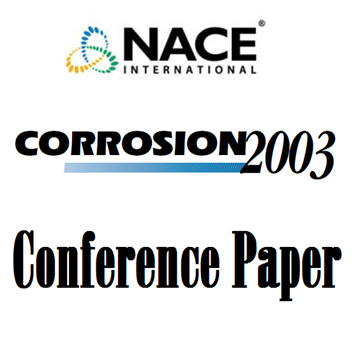Search
Process Industries
View as
Sort by
Display
per page
00588 STAINLESS STEELS IN CHLORINE DIOXIDE ENVIRONMENTS - PREDICTING THE POSSIBILITY OF PITTING
Product Number:
51300-00588-SG
ISBN:
00588 2000 CP
Publication Date:
2000
$20.00
03518 STRESS CORROSION CRACKING OF 304L STAINLESS STEEL IN SODIUM SULFIDE-CONTAINING CAUSTIC SOLUTIONS
Product Number:
51300-03518-SG
ISBN:
03518 2003 CP
Publication Date:
2003
$20.00
03580 CHEMICAL CLEANING HRSG'S TOP 10 11 LESSONS LEARNED
Product Number:
51300-03580-SG
ISBN:
03580 20003 CP
Publication Date:
2003
$20.00
03611 Thermoplastic Dual Laminate Applications - The Good and the Bad
Product Number:
51300-03611-SG
ISBN:
03611 2003 CP
Publication Date:
2003
$20.00
04224 Investigation Concerning the Application of the Weld Filler Metals FM 59 and FM 22 for Welding of Nickel Alloys of the C-Series (NiCrMo Alloys) in the Chemical Process Industry
Product Number:
51300-04224-SG
ISBN:
04224 2004 CP
Publication Date:
2004
$20.00
06458 UNDER-DEPOSIT CORROSION MECHANISMS IN BOILERS
Product Number:
51300-06458-SG
ISBN:
06458 2006 CP
$20.00
06536 CORROSION EFFECTS FROM HIGH IRON CONCENTRATION IN ALKALINE CHELANT BOILER CLEANING
Product Number:
51300-06536-SG
ISBN:
06536 2006 CP
Publication Date:
2006
$20.00
07206 Corrosion and Stress Corrosion Cracking of Duplex Stainless Steels in Pulping Liquors
Product Number:
51300-07206-SG
ISBN:
07206 2007 CP
Publication Date:
2007
$20.00
07443 Stress Assisted Corrosion in Boiler Tubes - Failure Analysis
Product Number:
51300-07443-SG
ISBN:
07443 2007 CP
Publication Date:
2007
$20.00
08672 Development of an Equipment Integrity Management System for the Nexen Long Lake Commercial SAGD Facility
Product Number:
51300-08672-SG
ISBN:
08672 2008 CP
Publication Date:
2008
$20.00
10083 UNS S31254 - A Bleach Plant Success Story
Product Number:
51300-10083-SG
ISBN:
10083 2010 CP
Publication Date:
2010
$20.00
10354 Case Studies of Corrosion Failures in Oil Refineries
Product Number:
51300-10354-SG
ISBN:
10354 2010 CP
Publication Date:
2010
$20.00












